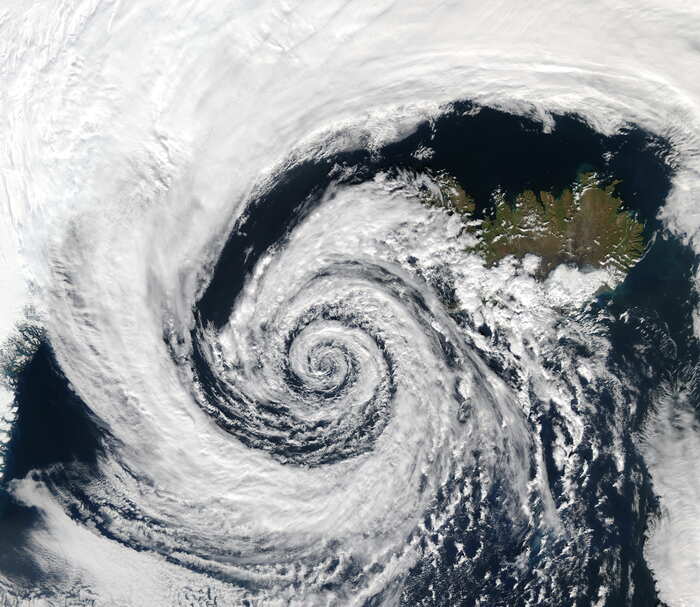Credit: RAUL ARBOLEDA / AFP via Getty Images
Editor's note:
Luis Germán Naranjo is a Marine Biologist from Jorge Tadeo Lozano University, with a master's degree in animal ecology and a doctorate in evolutionary ecology from New Mexico State University and was a professor for almost 20 years in the Department of Biology at Universidad del Valle.
For a couple of years he directed the international programs of the American Bird Conservancy and since 2001 he has worked for WWF Colombia, where he is Director of Conservation and Governance.
He has published more than 150 scientific and outreach articles and books and currently writes a monthly column for Semana Sostenible.
Thanks to his 40 years of professional experience, he is one of the most recognized naturalists in the country and for this reason he was named Corresponding Member of the Colombian Academy of Exact, Physical and Natural Sciences.
The opinions expressed in this comment are yours.
(CNN Spanish) -
Since 1998, every two years the WWF has delivered a dark message to the world.
Through the Living Planet Report (LPR), the organization points out that the decline in biological diversity and the footprint of humanity on the planet are increasingly alarming.
For a couple of weeks, this information is in the news and then — as the pressing issues of everyday life occupy the ever-scattered public attention — it falls into oblivion.
Global society, increasingly concentrated in the artificial environment of cities, lacks a reference that allows it to understand the seriousness of this information and act accordingly.
The disconnect between urban life and the ecosystems that surround it is evident and therefore, the relationship between the decline in wild animal populations and the well-being of society is something difficult to appreciate for the vast majority.
Or at least it was until this year.
The global health emergency produced by the rapid expansion of Sars-Cov-2 gave humanity a glimpse of the terrifying scenario it faces when the disruption caused by its actions on the functioning of ecosystems gets out of control.
The publication of a new edition of the LPR is therefore timely and its message, based on the best available scientific evidence, resonates more clearly than ever.
Well, although it brings an update of the usual indicators in this document, this time it also contains elements that can make humanity take a different look at its relationship with the world it inhabits.
This year the report is a collection aimed at different audiences.
In addition to the full version and the executive summary, it includes a document for children and young people, another with testimonies and individual reflections and two additional texts that offer an in-depth reading of as many angles of the report.
In all of them, the conclusion is unequivocal.
The "Living Planet" index shows the continuous decline of vertebrate animal species.
Globally, the studied populations of mammals, fish, birds, reptiles and amphibians have decreased 68% —on average— from 1970 to 2016;
in Latin America and the Caribbean this figure is even more alarming, with an average decrease of 94%.
And while the drivers of biodiversity loss are the same around the world, countries that are trying to accelerate their economic development suffer the most from its impacts.
But this interpretation, which repeats what was said in previous editions of the LPR, this time is supported by arguments that show how far the decline in biodiversity translates into obvious risks for humanity.
Soil organisms, many plant species, and insects are also declining, putting at risk the continuity of many processes that we all depend on.
The disappearance of organisms from the soil affects nutrient cycles, which in turn can decrease plant production and if some insects go extinct, many plants would lose the ability to reproduce.
The report's emphasis on these other sets of living things is one of its most important aspects.
Relying on healthy soils, irrigation, pollinating organisms, and biological pest control, global food production can collapse as ecosystems are no longer resilient as a result of inappropriate agricultural practices.
Deforestation and degradation of ecosystems, the waste and pollution of water, a large part of greenhouse gas emissions and the expansion of invasive species, are some of the factors that make our food systems one of the main factors of loss. of biodiversity.
In this same sense, the LPR highlights that human health is inseparable from the health of the rest of nature, as we have painfully learned with this covid-19 pandemic.
If, as the World Health Organization (WHO) says, we understand that "health" is the complete state of physical, mental and social well-being - and not only the absence of disease - it is clear that the future of our species depends on the way in which we relate to other living beings.
For this reason, the subtitle of this edition - “Reversing the Biodiversity Loss Curve” - should become a collective purpose of global society.
In its 2020 edition, the LPR examines the impact that six possible future scenarios would have, from current forms of production and consumption to a portfolio that combines sustainable production and consumption with increased conservation actions, on the indicators of state of biodiversity.
The result of these models is strong and hopeful.
It is urgent to assume, at all costs, the collective task of slowing down and reversing the downward trajectory of these indicators over the next ten years, so that, by the end of the century, they are in a clear recovery.
If we want to secure a second chance on Earth for the human species, we must initiate it immediately.
Biodiversity Pollution Deforestation








